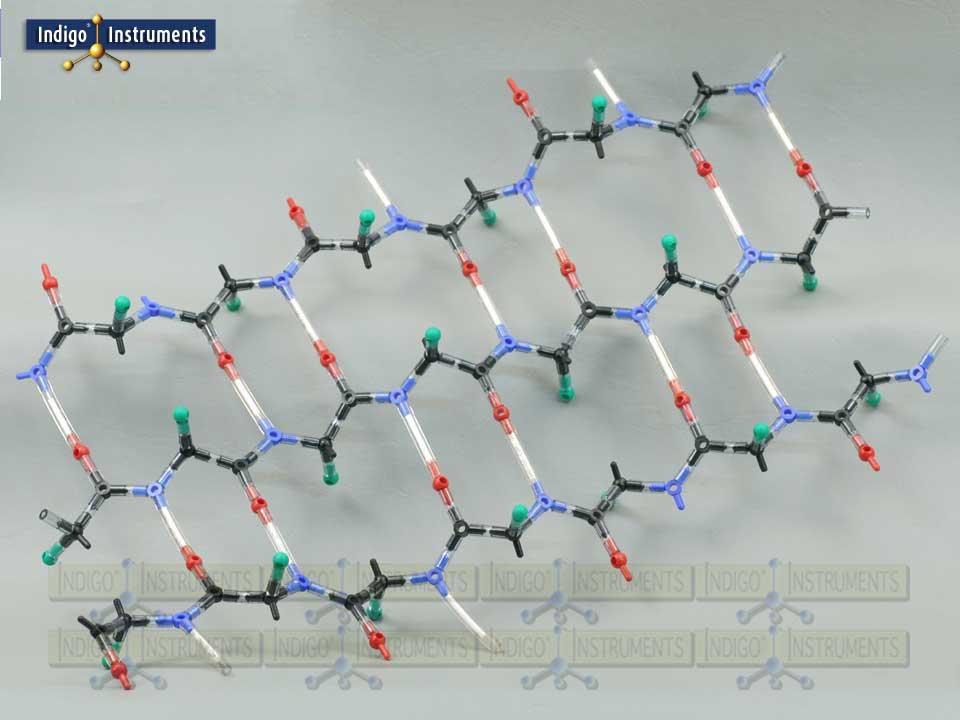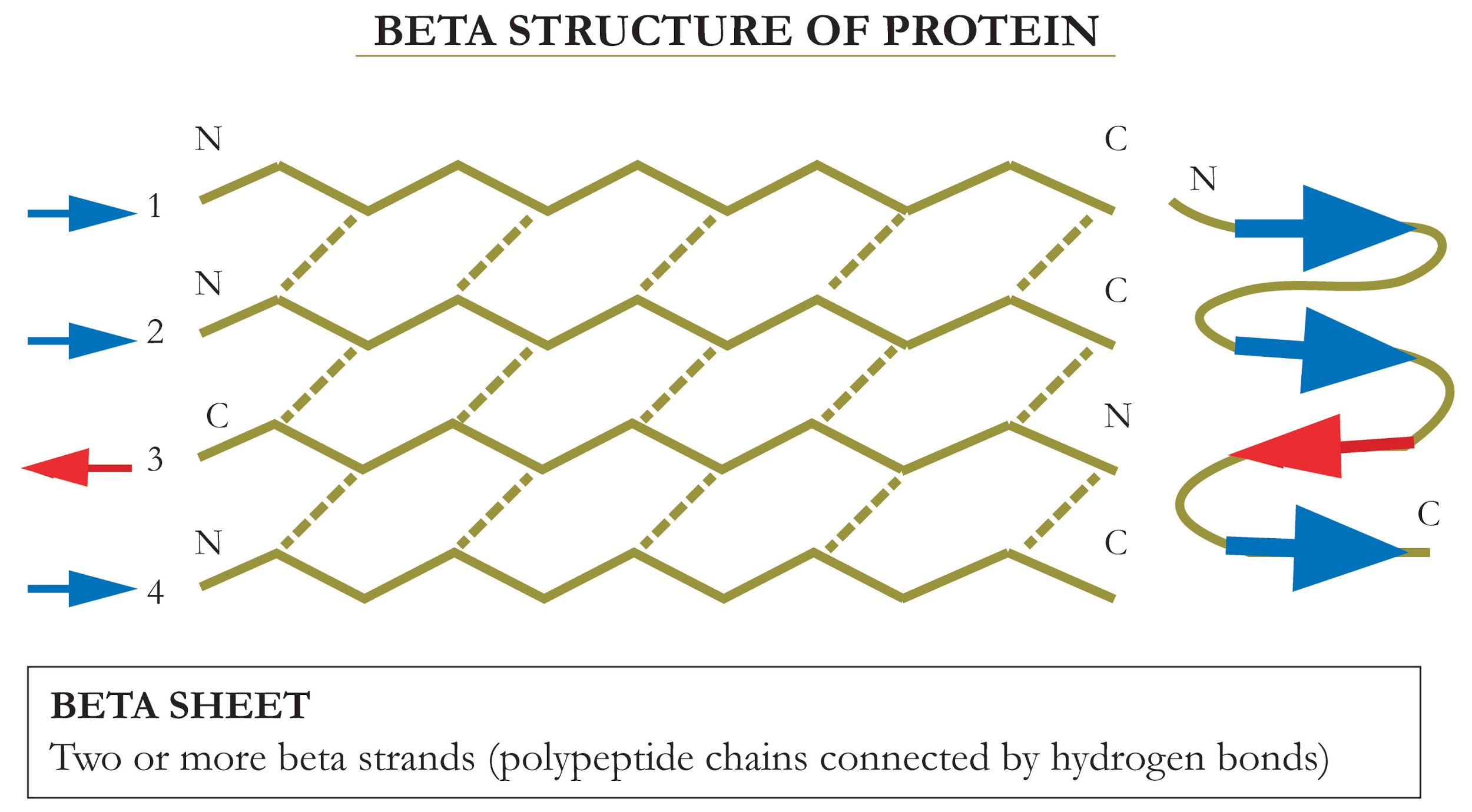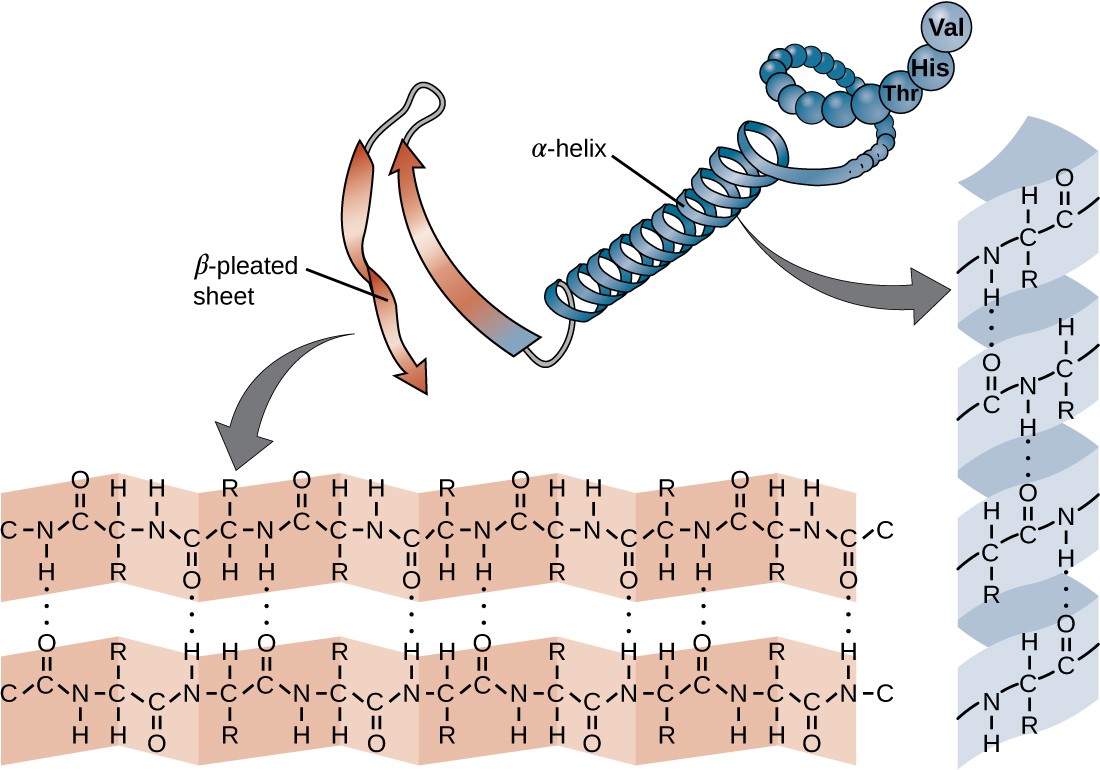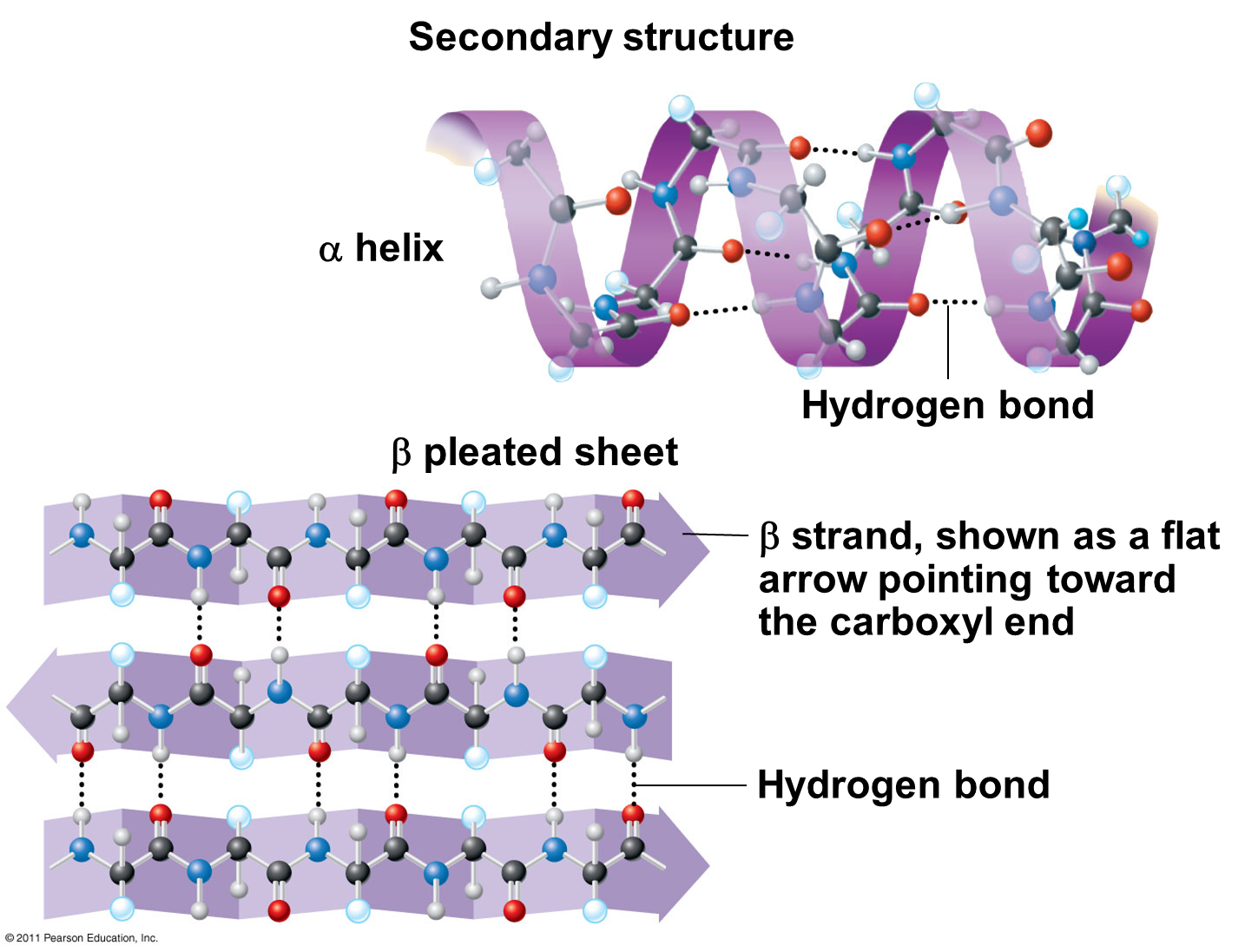Beta Pleated Sheet Secondary Structure Of Proteins
Beta Pleated Sheet Secondary Structure Of Proteins - Web the secondary structure is formed by hydrogen bonds between carbonyl and amino groups that make up the polypeptide backbone and causes the molecule to either bend and fold (beta pleated sheet) or spiral. This structure occurs when two (or more, e.g. In this structure, two different regions of a polypeptide chain lie side by side and are bound by hydrogen bonds.
Web the secondary structure is formed by hydrogen bonds between carbonyl and amino groups that make up the polypeptide backbone and causes the molecule to either bend and fold (beta pleated sheet) or spiral. This structure occurs when two (or more, e.g. In this structure, two different regions of a polypeptide chain lie side by side and are bound by hydrogen bonds.
In this structure, two different regions of a polypeptide chain lie side by side and are bound by hydrogen bonds. Web the secondary structure is formed by hydrogen bonds between carbonyl and amino groups that make up the polypeptide backbone and causes the molecule to either bend and fold (beta pleated sheet) or spiral. This structure occurs when two (or more, e.g.
Indigo Beta Pleated Sheet Protein Structure
This structure occurs when two (or more, e.g. In this structure, two different regions of a polypeptide chain lie side by side and are bound by hydrogen bonds. Web the secondary structure is formed by hydrogen bonds between carbonyl and amino groups that make up the polypeptide backbone and causes the molecule to either bend and fold (beta pleated sheet).
parallel beta sheet Cheaper Than Retail Price> Buy Clothing
Web the secondary structure is formed by hydrogen bonds between carbonyl and amino groups that make up the polypeptide backbone and causes the molecule to either bend and fold (beta pleated sheet) or spiral. This structure occurs when two (or more, e.g. In this structure, two different regions of a polypeptide chain lie side by side and are bound by.
The beta pleated sheet structure of protein is due to(a)Formation of
Web the secondary structure is formed by hydrogen bonds between carbonyl and amino groups that make up the polypeptide backbone and causes the molecule to either bend and fold (beta pleated sheet) or spiral. This structure occurs when two (or more, e.g. In this structure, two different regions of a polypeptide chain lie side by side and are bound by.
protein_secondary.html 05_21cProteinStructureL.jpg
Web the secondary structure is formed by hydrogen bonds between carbonyl and amino groups that make up the polypeptide backbone and causes the molecule to either bend and fold (beta pleated sheet) or spiral. In this structure, two different regions of a polypeptide chain lie side by side and are bound by hydrogen bonds. This structure occurs when two (or.
7.4 Proteins Microbiology 201
This structure occurs when two (or more, e.g. In this structure, two different regions of a polypeptide chain lie side by side and are bound by hydrogen bonds. Web the secondary structure is formed by hydrogen bonds between carbonyl and amino groups that make up the polypeptide backbone and causes the molecule to either bend and fold (beta pleated sheet).
The BioLogs CAPE 1 Proteins
Web the secondary structure is formed by hydrogen bonds between carbonyl and amino groups that make up the polypeptide backbone and causes the molecule to either bend and fold (beta pleated sheet) or spiral. In this structure, two different regions of a polypeptide chain lie side by side and are bound by hydrogen bonds. This structure occurs when two (or.
Secondary structures of keratin protein (beta pleated sheets and alpha
This structure occurs when two (or more, e.g. Web the secondary structure is formed by hydrogen bonds between carbonyl and amino groups that make up the polypeptide backbone and causes the molecule to either bend and fold (beta pleated sheet) or spiral. In this structure, two different regions of a polypeptide chain lie side by side and are bound by.
[Solved] How many hydrogen bonds involving the backbone CO and NH can
Web the secondary structure is formed by hydrogen bonds between carbonyl and amino groups that make up the polypeptide backbone and causes the molecule to either bend and fold (beta pleated sheet) or spiral. This structure occurs when two (or more, e.g. In this structure, two different regions of a polypeptide chain lie side by side and are bound by.
Beta pleated sheet Secondary structure of protein YouTube
In this structure, two different regions of a polypeptide chain lie side by side and are bound by hydrogen bonds. This structure occurs when two (or more, e.g. Web the secondary structure is formed by hydrogen bonds between carbonyl and amino groups that make up the polypeptide backbone and causes the molecule to either bend and fold (beta pleated sheet).
Amino Acids 8. The betapleated sheets secondary structure of Proteins
In this structure, two different regions of a polypeptide chain lie side by side and are bound by hydrogen bonds. Web the secondary structure is formed by hydrogen bonds between carbonyl and amino groups that make up the polypeptide backbone and causes the molecule to either bend and fold (beta pleated sheet) or spiral. This structure occurs when two (or.
This Structure Occurs When Two (Or More, E.g.
Web the secondary structure is formed by hydrogen bonds between carbonyl and amino groups that make up the polypeptide backbone and causes the molecule to either bend and fold (beta pleated sheet) or spiral. In this structure, two different regions of a polypeptide chain lie side by side and are bound by hydrogen bonds.







![[Solved] How many hydrogen bonds involving the backbone CO and NH can](https://cdn.testbook.com/images/production/quesImages/qImage646f23abed4806260c7a04d2.png)

